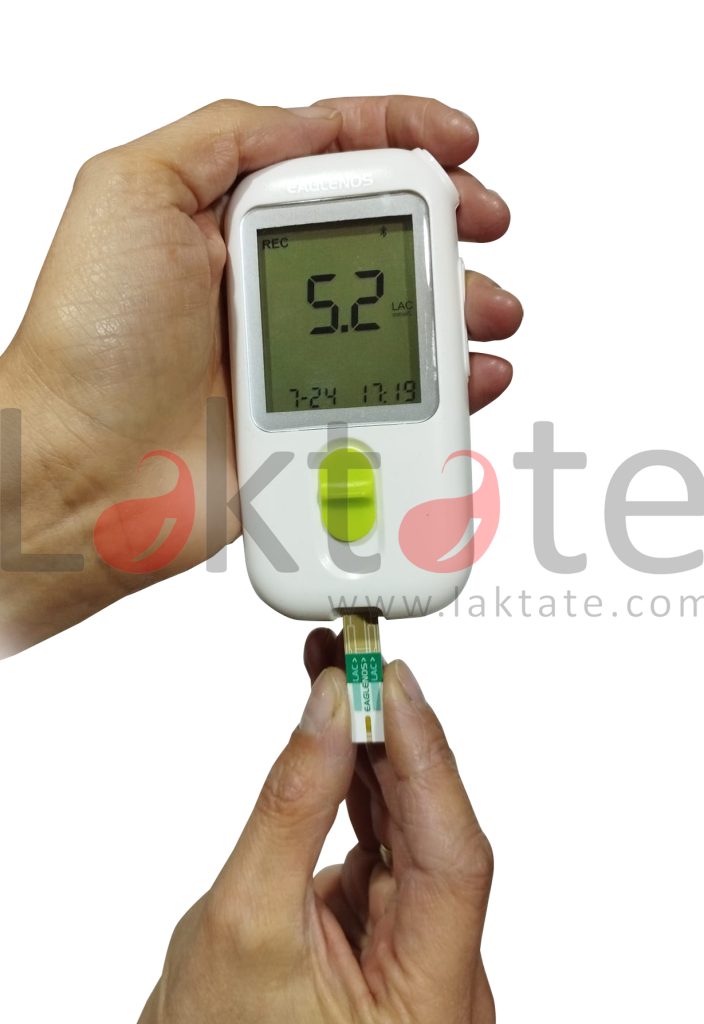
Importance of Test Strips in Blood Lactate Testing
The test strips or sensors, their storage and handling, are the most important elements in achieving reliable and accurate results when performing a blood test with a portable blood analyser.

The analysis of different parameters in blood, such as lactate, by means of portable analysers usually uses the electrochemical or enzymatic-amperometric method, which is based on the following:
1.- Collection of a blood sample of sufficient volume (variable depending on the particular sensor or test strip) by means of a sensor or test strip that fills the Reaction Zone or Mixing Chamber by capillary action.
Many test strips incorporate a reaction zone filling sensor, which causes the analyser to beep and automatically starts the reaction process (point 2).
It is certainly important that the volume of the drop of blood to be taken with the test strip is large enough to fill the reaction zone in one go; if the volume of the drop of blood is not sufficient and the process has to be repeated with the same test strip, we may obtain an anomalous result or sometimes the analyser directly displays an error message..

In order not to interfere with this process, it is very important to handle the test strip correctly, avoiding picking it up from or touching the absorption area, to maintain the blood absorption capacity of the test strip in perfect condition.
2.- Reaction of the parameter to be analysed (lactate, glucose, ketone, etc.) with a specific enzyme that is previously deposited in the reaction zone of the test strip. In second generation biosensors, in addition to the specific enzyme that reacts with the substance to be analysed, a mediator for electron transfer is also used.
In addition to ‘placing’ a series of reagents in the Reaction Zone, immobilisation techniques must also be incorporated to ensure that the reagents remain in place over time and that there is no interference from oxygen and humidity in the air; however, in order to minimise the risk of diminishing the functionality of the test strip, it is always advisable to close the bottle (if the test strips are not individually packaged) once the test strip has been removed for the analysis to be performed.
3.- Release of electrons as a result of the chemical reaction(s) of the parameter under study (in this case lactate) with the particular enzyme. The higher the amount of lactate, the more electrons are released, so there is a direct relationship between the lactate concentration in the sample and the number of electrons formed, generating an electrical potential of an intensity proportional to the lactate concentration
4.- The analyser measures the electrical current generated in the reaction zone and for this purpose ‘uses’ at least 2 electrodes that are ’embedded’ in the test strip and that communicate the Analyser itself with the Reaction Zone (near the tip of the Test Strip or Sensor). Once the analyser measures the electrical potential and thanks to its own algorithm, it translates the intensity of the electrical current into a specific lactate value, showing the result on the screen.
All things considered, we can appreciate that the analysis of lactate, glucose, ketones,… using a portable analyser is a complex process despite the simplicity of use and obtaining results. In view of the above, it is easy to understand the importance of the test strip and its correct handling and storage if we want to obtain reliable analysis results. Nowadays, the vast majority of researchers working in the field of analytical control consider that when it comes to obtaining accurate results with a portable blood analyser, the most important thing is the quality of the test strip, its storage and handling, rather than the meter or analyser itself.
